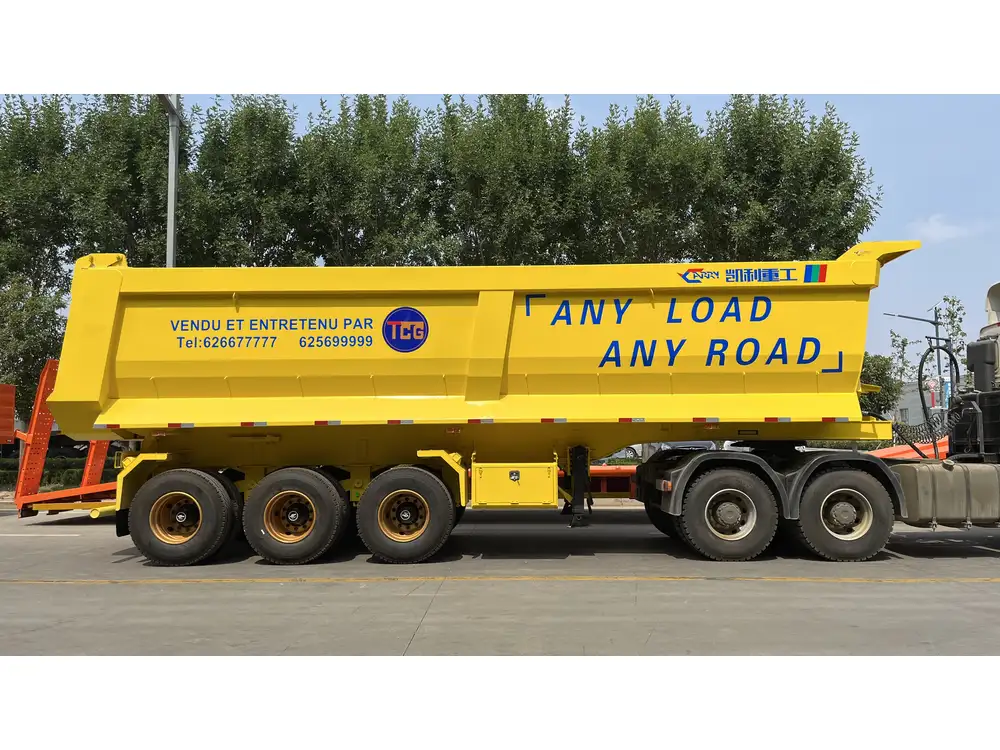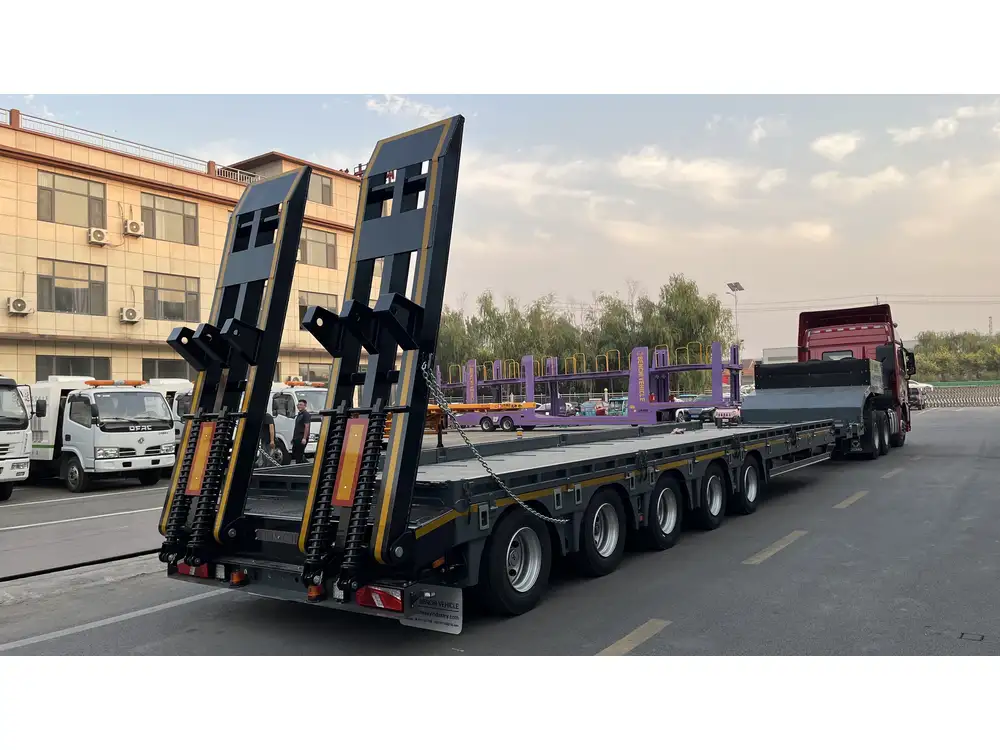Disconnecting a semi-trailer from its cab is an essential skill for drivers in the trucking industry. Understanding the mechanics behind this process can dramatically streamline logistics, enhance safety, and improve overall efficiency. This guide provides a detailed exploration of the steps involved in properly disconnecting a semi-trailer, various considerations to remember, and the tools necessary to ensure a smooth operation.
Understanding the Connection Mechanism
Components of the Fifth Wheel
Before diving into the disconnection process, it’s important to understand the components involved in the connection between a cab and a semi-trailer. The primary mechanism is known as the fifth wheel, which serves as the coupling device.
Here’s a breakdown of its parts:
| Component | Function |
|---|---|
| Fifth Wheel Plate | Connects to the kingpin of the trailer |
| Jaw Assembly | Secures the kingpin in place |
| Release Handle | Engages and disengages the jaw assembly |
| Lock Indicator | Provides a visual cue that the trailer is securely hitched or unhitched |

The Role of the Kingpin
The kingpin is a crucial element that connects the semi-trailer to the fifth wheel. It is a steel pin located at the front of the trailer and is secured within the jaw assembly of the fifth wheel. Understanding how the kingpin interacts with the fifth wheel is vital for ensuring a successful disconnection.
Step-by-Step Guide: Disconnecting a Semi-Trailer
Navigating the disconnection process requires attention to detail, adherence to safety protocols, and a systematic approach. Here’s a comprehensive yet straightforward guide:
1. Preparing the Work Area
Before physically disconnecting the trailer, make sure the parking area is safe and free from obstacles. Follow these steps:
- Ensure Level Ground: Always park on level ground to prevent unintentional movement.
- Deactivate Engine and Air Systems: Turn off the engine and depressurize air brakes to avoid any mishaps during the process.
- Set the Trailer’s Landing Gear: Lower the trailer’s landing gear to provide stability once disconnected.

2. Engage the Safety Procedures
Safety should always be a priority. Implement the following measures:
- Wear the Appropriate Personal Protective Equipment (PPE): This includes gloves and steel-toed boots.
- Use Wheel Chocks: Place wheel chocks behind the trailer wheels to prevent rolling.
3. Identify the Release Mechanism
Locate the release handle on the fifth wheel. It is typically located on the driver’s side of the truck. Familiarize yourself with its operation:
- Visibility Check: Ensure you can see the release mechanism clearly without obstructions.
- Manual or Air Release: Identify whether your system uses a manual lever or an air-operated release. The latter will likely require the release of air pressure before disengagement.
4. Disengaging the Fifth Wheel
Proceed carefully with the disconnection:
Moving the Cab Forward:
- Slowly Drive Forward: Carefully pull the truck cab forward a few inches to ensure the kingpin is clear of the jaws. This movement will release tension on the kingpin, facilitating the next steps.
- Avoid Jerky Movements: Ensure that your movements are controlled; abrupt actions could lead to damage or dangerous situations.
Disengage the Release Handle:
- If operating a manual handle, pull the release handle completely to its fully extended position then push it back to release the kingpin.
- For air systems, follow the appropriate instructions based on your vehicle’s specifications.

5. Finalizing the Disconnection
After releasing the kingpin from the fifth wheel, complete the process by performing the following:
- Move the Cab Away: Shift the cab to a safe distance from the trailer, being careful of your surroundings.
- Ensure Security of the Trailer: Double-check that the trailer’s landing gear is fully extended and that it remains stable after the disconnection.
Common Issues During Disconnection
Kingpin Seizing
In some cases, the kingpin can seize within the fifth wheel, making disconnection difficult. To mitigate this issue:
- Inspect Regularly: Regular maintenance and inspection can prevent rust and build-up around the kingpin.
- Use Lubrication: Apply appropriate lubricants periodically to keep all moving parts functioning smoothly.

Air Line Disconnection
If your semi-trailer utilizes air brakes, disconnection might be complicated by air lines. Here’s how to address it:
- Assess Air Lines: Ensure air lines are not under tension before attempting to disconnect them.
- Use Quick Disconnect Fittings: Familiarize yourself with the air line fittings and ensure proper handling to avoid damage.
Equipment and Tools Essentials
Utilizing the correct tools can simplify the disconnection process. Here’s a list of essentials:
- PPE Gear: Gloves, steel-toed boots, and safety goggles.
- Wheel Chocks: For added safety while disconnecting.
- Trailer Jack: In case of issues with the landing gear.
- Lubricating Oil: To keep the fifth wheel and kingpin functioning properly.
Frequently Asked Questions (FAQs)

Q1: How Often Should I Inspect the Fifth Wheel?
Regular inspections are paramount for maintaining safety and functionality. We recommend performing checks before each trip and conducting a more thorough inspection every month or after severe weather conditions.
Q2: What is the Weight Capacity of a Standard Fifth Wheel?
Typically, a standard fifth wheel can handle weight capacities ranging from 20,000 to 30,000 pounds, but always refer to your manufacturer’s specifications to verify.
Q3: Can I Disconnect Alone?
While it’s possible to disconnect alone, it’s advisable to have a partner for safety and efficiency, especially in case of unexpected issues.

Q4: What Should I Do if the Release Handle is Stuck?
If you encounter a stuck release handle, avoid forcing it. Instead, assess if there’s any obstruction and consider applying a lubricant to loosen it. In persistent cases, professional assistance may be needed.
Conclusion
Incorporating the knowledge of how to properly disconnect a semi-trailer from its cab not only enhances safety and operational efficiency but also contributes to improved logistics management. By following the structured approach outlined in this guide, drivers can ensure a hassle-free experience every time they need to disconnect. Regular maintenance, safety protocols, and equipment awareness are paramount elements that every truck driver should master in enhancing their overall capability in the field.
Equip yourself with this knowledge, and truly master the art of semi-trailer disconnection, ultimately leading to enhanced safety, reduced downtime, and increased productivity in your operations.



